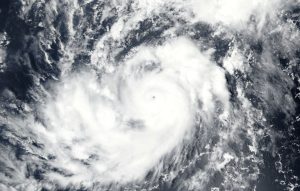Global catastrophe risk modeller, AIR Worldwide, has released an estimate for the insurance industry loss for Hurricane Irma for the U.S. and selected Islands in the Caribbean, of between $20 billion and $65 billion, combined.
 For the U.S., AIR Worldwide estimates an insurance industry loss of between $15 billion and $50 billion as a result of wind and storm surge from hurricane Irma, which remains on track to hit Florida Sunday morning.
For the U.S., AIR Worldwide estimates an insurance industry loss of between $15 billion and $50 billion as a result of wind and storm surge from hurricane Irma, which remains on track to hit Florida Sunday morning.
For selected Islands in the Caribbean, the catastrophe risk modeller estimates that Irma’s wind and precipitation-induced flooding will drive an estimated insured loss of between $5 billion and $15 billion.
AIR notes that these estimates are based on the NHC’s Saturday, September 9th 5am EDT forecast advisory for major hurricane Irma.
The intensity of the storm as it approaches the U.S. coastline is subject to change, but it is expected to intensify from its current Category 3 status to a Category 4 storm as it nears the Florida coast.
Parts of the Caribbean have already been battered by the storm, and now hurricane and storm surge warnings are in place for the Bahamas and Florida.
“At least two nuclear plants in Florida were shut down as a precautionary measure: the Turkey Point plant and the St. Lucie plant. The U.S. Army Corps of Engineers drew down the levels in Lake Okeechobee and inspected the dam for safety. The South Florida Water Management District lowered water levels in canals as they plan for flooding and storm surge dangers. Of note, relative sea level on the Miami coast has risen 3.3 inches since Hurricane Andrew struck the area 25 years ago, and Miami-Dade County’s population has grown 35 percent.
“The Georgia governor declared a state of emergency in at least six coastal counties, and issued mandatory evacuation orders for the City of Savannah and surrounding Chatham County,” explains AIR.
Concerns have also been raised for cotton fields in North and South Carolina and Texas, which could experience additional damage soon after a reported $150 million hit from hurricane Harvey.
AIR notes that almost 80% of Florida’s total insured value is in coastal counties, which suggests that the insured loss for Irma could be higher than seen with Harvey, owing to a lack of insurance penetration in the region, especially surrounding flood, which is expected to make up the majority of Harvey losses.
“The Miami metropolitan area has the highest population concentration in the southeastern region. Since Hurricane Andrew in 1992, Florida’s building codes have been continually revisited and improved after damage from subsequent hurricanes, and are now the strictest in the country for hurricane damage resistance,” explains AIR.
AIR explains that its estimates for the U.S. from Irma include “wind and storm surge damage to onshore residential, commercial and industrial properties and their contents, automobiles, and time element coverage (additional living expenses for residential properties and business interruption for commercial properties).”
While for the selected Islands in the Caribbean loss estimates from Irma include “wind precipitation-induced flooding damage to onshore residential, commercial, and industrial properties and their contents, automobiles, and time element coverage (additional living expenses for residential properties and business interruption for commercial properties).”


